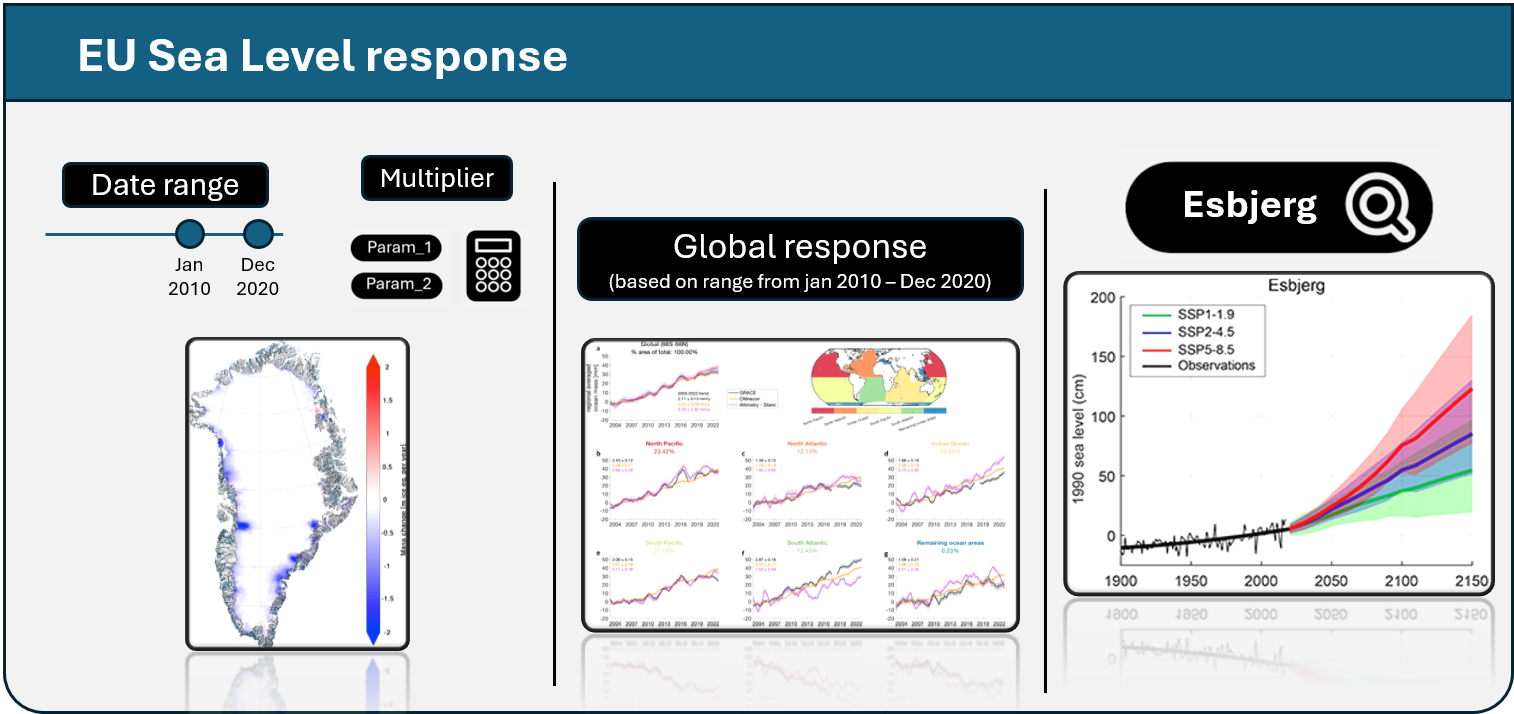
EU Sea Level Response Fingerprint
This use case leverages Earth Observation data, primarily ESA radar altimetry, to accurately predict the impact of melting ice sheets on sea levels across the European Union. By developing a comprehensive understanding of ice sheet dynamics from current observations and future projections, we aim to determine the contribution of ice sheets to sea level rise. This data-driven approach will enable policymakers, scientists, and other stakeholders to make informed decisions for mitigating climate change impacts and planning effective adaptation strategies.
Key Stakeholders:
- EU Policymakers: Responsible for developing policies on climate change mitigation and adaptation within the EU.
- Climate Scientists: Researchers working to understand the mechanisms behind ice sheet dynamics and their influence on sea level changes.
- Environmental NGOs: Advocate for sustainable climate policies and actions.
- Coastal Communities: Directly affected by rising sea levels, these communities need accurate data for planning adaptation measures.
Benefits:
- Informed Decision-Making: Stakeholders can access reliable data to develop effective strategies for climate change mitigation and adaptation.
- Risk Reduction: Coastal communities can better prepare for and adapt to rising sea levels, reducing the risk of damage to infrastructure and ecosystems.
- Scientific Advancement: The project will enable the scientific community to enhance its understanding of ice sheet dynamics and its role in sea level rise, fostering collaboration and further research.
- Public Awareness: Increased understanding of the factors driving sea level rise will help empower individuals and communities to take proactive steps in addressing climate change.
The EU Sea Level Response Fingerprint Use Case Demonstrator will be a Jupyter Notebook, offering an intuitive interface for stakeholders, such as national coastal authorities, to actively engage with the data. The notebook will allow users to define a European bounding box or specify their area of interest and select from various ice sheet scenarios. Once the parameters are set, stakeholders can view the corresponding sea level fingerprint for the chosen region.

Mock-up of a demonstrator for EO-driven SLR fingerprint. The workflow provides (left) Greenland ice mass loss based on a selected date range (Simonsen et al., 2021). (middle) Global sea level fingerprints (Ludwigsen et al. 2024) can be chosen to display Europe. (right) The user-defined selection of the city is here exemplified by Esbjerg, DK (adopted from Colgan et al., 2022b).